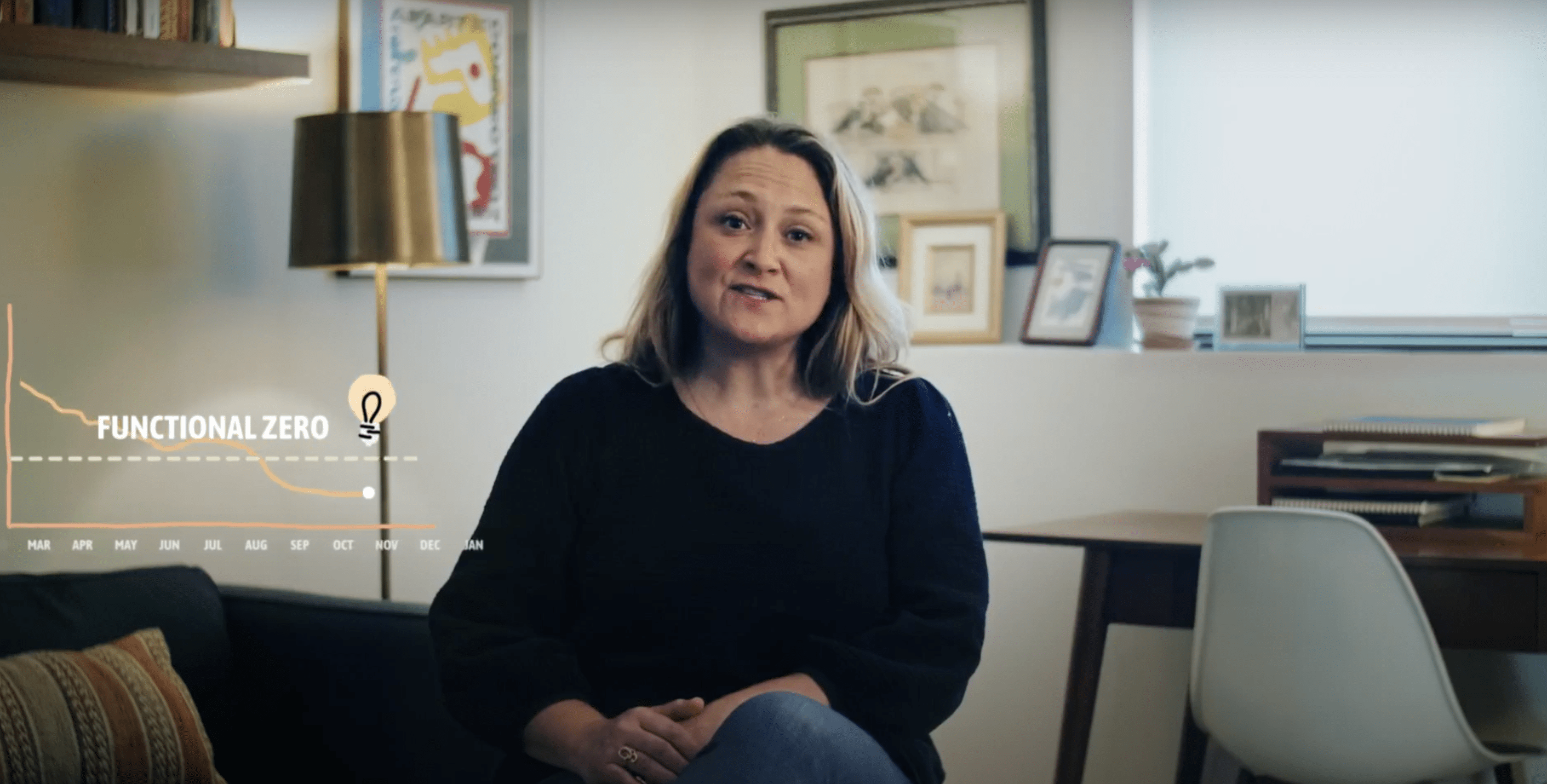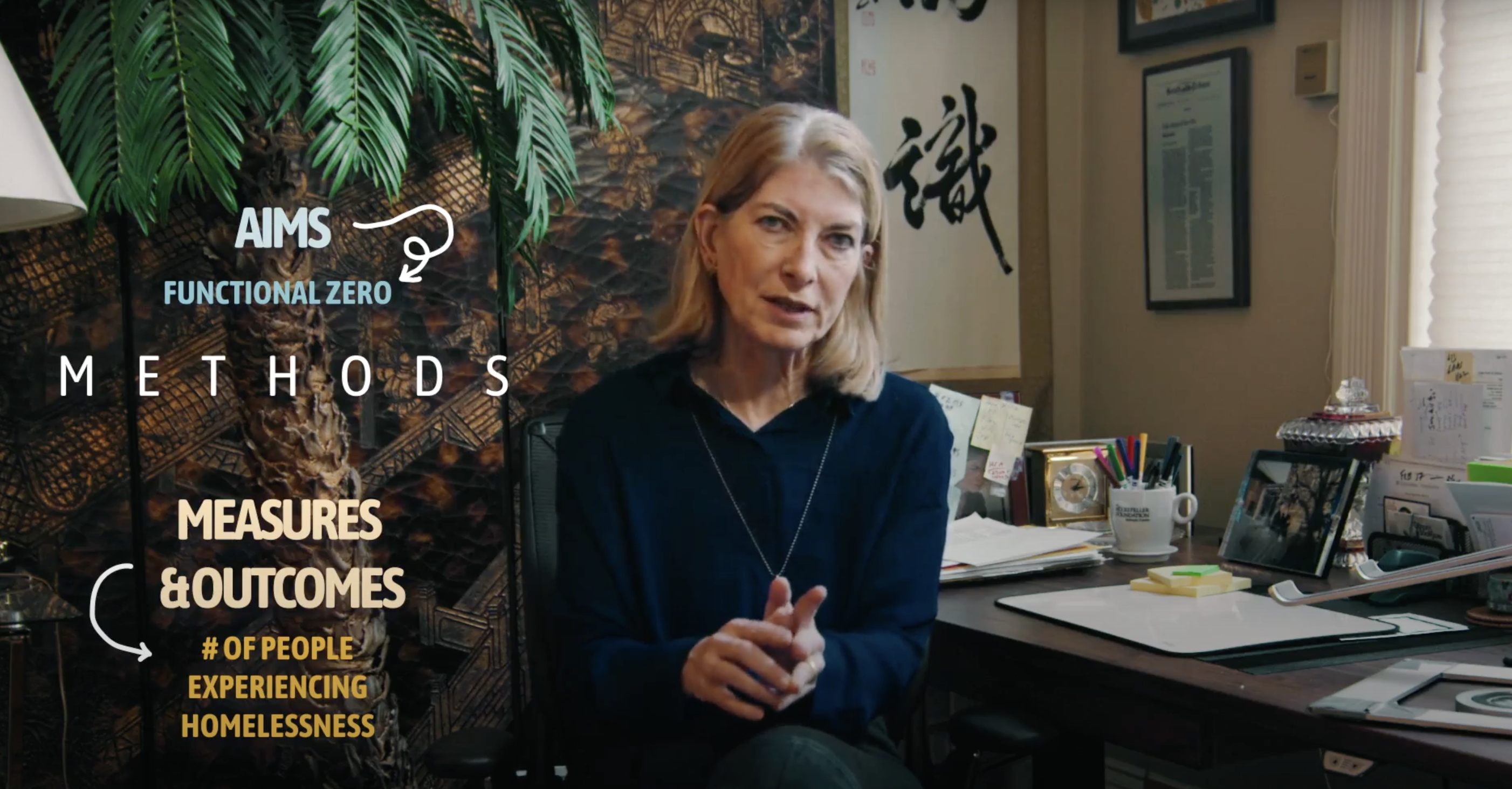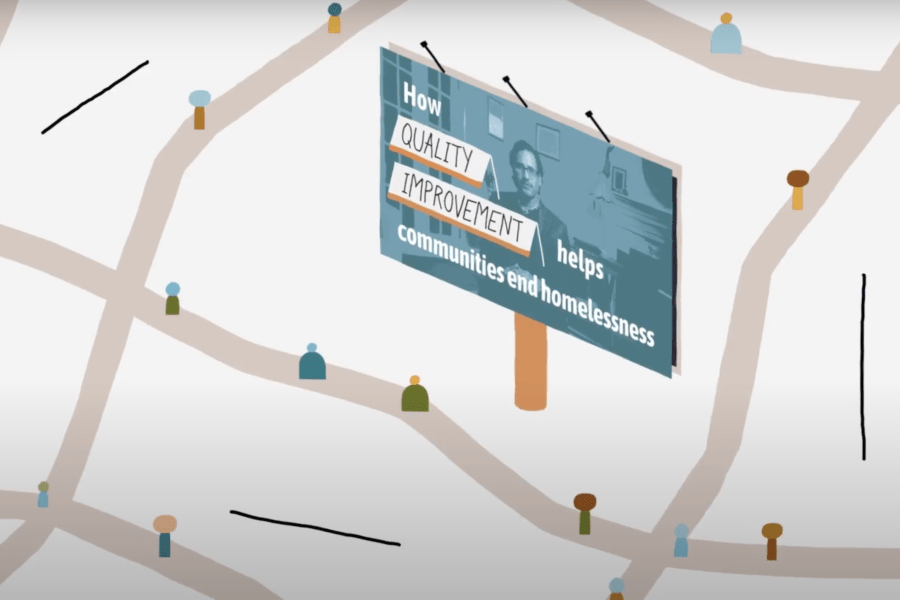Every system is perfectly designed to get the results it gets. This idea is at the heart of quality improvement (QI), the applied science of using systems change to improve outcomes.
Quality improvement expresses the idea behind systems thinking — the idea that outcomes are the product of systems, and that improving outcomes requires changes to the system.
For the past several years, Community Solutions has partnered with the Institute of Healthcare Improvement to understand whether the concept that was transforming other sectors could be applied to the problem of homelessness.
The outcome was the Built for Zero movement.
Kedar Mate, MD, President and CEO of the Institute for Healthcare Improvement, Rosanne Haggerty, President and CEO of Community Solutions, and Beth Sandor, Chief Program Officer at Community Solutions, share the six key components of a strong homeless response system based on QI principles.
1. Rallying around a shared aim

A cornerstone of QI is setting a measurable, shared aim. For Built for Zero communities, this translates to a commitment to achieve functional zero in homelessness. This milestone indicates a community has fewer people experiencing homelessness than the average number of people who are re-housed in a given month.
This shared goal to solve homelessness isn’t about isolated success stories but a collective march towards a future where homelessness becomes a rare occurrence and, when it does happen, is swiftly addressed.
2. Forging an integrated, responsive team

The success of QI hinges on dynamic, cross-functional teams. In our collaboration with IHI, we’ve learned the importance of leadership that champions shared goals and removes barriers to innovation. This has inspired Built for Zero communities to build integrated teams that operate under a collective vision.
By transitioning from the mindset of “my client” to “our clients,” Built for Zero communities are breaking down silos and fostering a unified team approach that aligns with their shared objectives.
3. Utilizing real-time, by-name data

Data isn’t just numbers; it’s the heartbeat of the system. By-name data is a comprehensive source of information that accounts for every person in a community experiencing homelessness, updated in real time. Using information collected and shared with their consent, each person on the list has a file that includes their name, homeless history, health, and housing needs.
By understanding the individual and real-time dynamics of homelessness, communities can offer targeted solutions. At the population level, this information enables them to prioritize resources, test changes to their system, and understand whether their efforts are driving overall homelessness toward zero.
4. Developing a testable strategy menu

Innovation is born from testing real-life ideas. Bakersfield and Kern County, California, a community of over 250,000 people didn’t just dream of change; they experimented with a variety of strategies, learning which moved them closer to functional zero. This approach ensures that actions are not just well-intentioned but effective.
5. Embracing knowledge sharing

Knowledge not shared is wasted. By sharing insights across the entire Built for Zero network, which spans over 100 U.S. communities as well as international partners, communities accelerate their journey towards functional zero, learning from each other’s successes and setbacks.
6. Balancing flexibility and focus

Quality improvement in social sectors often involves a tight-loose-tight model: tight on aims and outcomes, but flexible in the approach. This approach combines clear goal-setting and accountability with the flexibility and empowerment of team members.
This flexibility has proven crucial, as demonstrated by Bakersfield’s adaptable strategies in response to discovering their system had a bottleneck between the length of time a client was matched to housing resources to the time they located a unit to move into. Once this was highlighted as a challenge to be addressed, the team found creative ways to fix the problem, enabling them to reach functional zero for chronic homelessness.
Quality improvement principles to solve homelessness
Our partnership with IHI infuses quality improvement principles into homelessness response systems. The principles of QI are not just theoretical concepts; they are practical tools communities can use to systematically address homelessness.
By focusing on shared aims, integrated teamwork, real-time data, testable strategies, knowledge sharing, and a balanced approach, Built for Zero communities are reconstructing the very fabric of homeless response systems. This is the essence of the Built for Zero movement — a testament to the power of communities armed with the right tools and the unwavering belief that homelessness is solvable.





